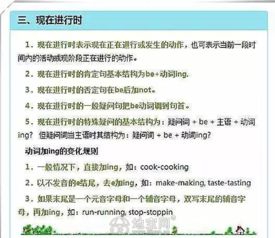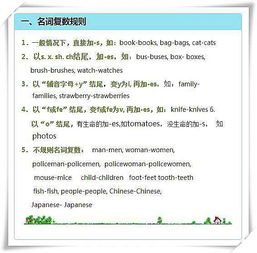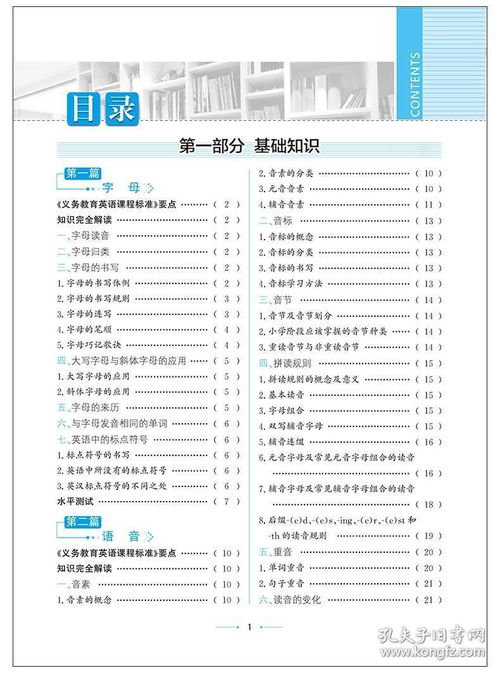小学英语总汇(小学英语必备知识点)
1.小学英语必备知识点
【小学英语语法知识点汇总】1.人称代词 主格: I we you she he it they 宾格: me us you her him it them 形容词性物主代词:my our your her his its their 名词性物主代词: mine ours yours hers his its theirs2.形容词和副词的比较级(1) 一般在形容词或副词后+er older taller longer stronger, etc(2) 多音节词前+more more interesting, etc.(3) 双写最后一个字母,再+er bigger fatter, etc.(4) 把y变i,再+er heavier, earlier(5) 不规则变化:well-better, much/many-more, etc.3.可数词的复数形式 Most nouns + s a book –books Nouns ending in a consonant +y - y+ ies a story—stories Nouns ending in s, sh, ch or x + es a glass—glasses a watch-watches Nouns ending in o +s or +es a piano—pianos a mango—mangoes Nouns ending in f or fe - f or fe +ves a knife –knives a shelf-shelves4.不可数名词(单复数形式不变) bread, rice, water ,juice etc.5. 缩略形式 I'm = I am you're = you are she's = she is he's = he is it's = it is who's =who is can't =can not isn't=is not etc6. a/an a book, a peach an egg an hour7. Preposition:on, in ,in front of, between, next to, near, beside, at, behind.表示时间: at six o'clock, at Christmas, at breakfast on Monday on 15th July On National Day in the evening in December in winter8. 基数词和序数词 one – first two-second twenty-twentieth9. Some /any I have some toys in my bedroom.Do you have any brothers or sisters?10. be 动词(1) Basic form: am/are/is(2) 肯定和否定句 I am(not) from London.My eyes are(not) small.My hair is(not) long.(3)一般疑问句: Am I a Chniese? Yes, you are. No, you aren't.Are they American? Yes, they are. No, they aren't.Is the cat fat? Yes, it is. No, it isn't.11. there be 结构 肯定句: There is a … There are … 一般疑问句:Is there …? Yes, there is./ No, there isn't.Are there…? Yes, there are. /No, there aren't.否定句: There isn't …. There aren't….12. 祈使句 Sit down please Don't sit down, please.13. 现在进行时.通常用“now”.形式: be + verb +ing eg: I am(not) doing my homework.You/We/They are(not) reading.He/She/It is(not) eating.动词 —ing 的形式 Most verbs +ing walk—walking Verbs ending in e -e + ing come—coming Short verbs ending in a vowel + a consonant run –running swim—swimming14.一般现在时。
通常用 “usually, often, every day, sometimes”。形式:肯定句:I go to school on foot every day.She goes to school on foot every day.一般疑问句:Do you jump high? Yes, I do. / No, I don't.Does he jump high? Yes, he does. / No, he doesn't.否定句: We don't go to school on Sundays.My mother doesn't like watching TV in the evening.15. (情态)动词can,must, should 后面直接用动词原形。
eg:1. I / He / She / They can sing.2.You should keep quiet in the library.16. 一般过去时态 (a) be 动词的过去式:I/He/she/it was(not)…. You/we/they were….一般疑问句was, were 放在句首。(b) 动词过去式:肯定句: I watched cartoons.She visited the zoo.一般疑问句: Did you read book last night? Yes, I did. No, I didn't.Did she clean the desk just now? Yes, she did. No, she didn't.否定句: They didn't go the the part yesterday.He didn't make model ships last week.(3)动词过去式的变化:规则动词的变化:Most verbs +ed eg. planted,watered,climbed。
Verbs ending in e +d eg liked。Verbs ending in a consonant +y --y +ied eg : study—studied Short verbs ending in a vowel + a consonant eg: stop --stopped 不规则动词的变化:is/am—was,are—were,do—did,have/has—had,make—made,fly-flew/u:/ eat—ate,take—took,run—ran,sing—sang,drink—drank 等等17. “Wh-” questions.What are you doing?What colour is it?What time is it? What's the time?Which is your watch, the yellow one or the white one?Who's the man with a big nose?Whose bag is it?When is your birthday?Where is my ball pen?Why do you like summer?How many books are there in the school bag?How old is the young man?How much is the toy bear?How do you go to school every day?What are you doing?What colour is it?What time is it? What's the time?Which is your watch, the yellow one or the white one?Who's the man with a big nose?Whose bag is it?When is your birthday?Where is my ball pen?Why do you like summer?How many books are there in the school bag?How old is the young man?How much is the toy bear?How do you go to school every day?。

2.求小学英语1到6年级的知识整理
教科书+笔记。
第一册:一般现在时( to be)表示经常性的动作,现在存在的情况或状态。 1.陈述句(肯定) 陈述句是陈述一个事实或者说话人的看法。
I'm Sam. This is my mother. It's a black dog. He's a doctor. She's a driver. 2.特殊疑问句 特殊疑问句归类 问“谁……”,“什么……”,“在哪里……”等这一类的问句叫做特殊疑问句。这种问句以疑问词开头。
How are you? How many? How old are you? What's your name? What's this? Where's the cat? 试题举例 三年级试题(第二册) Listen and choose.(听录音,根据图片选择正确答语,将序号填入括号里。) ( ) 2. A.They's tigers. B.They're monkeys. 隐形问句为: What are they? 读写部分:问句和答语分成两组连线,或者提供问句和2个被选答语进行选择。
1.How are you? A.I'm nine 2.How old are you? B.I'm fine,thank you. ? 1.How are you ? A.I'm nine. B.I'm fine,thank you 3.一般疑问句:试题举例 Ⅳ.Listen and draw faces .( 听音,与图片相符的画笑脸,不符的画哭脸。) 1. 1. Is it a kite ? Yes, it is. 2 2. Is it a bird? No,it isn't. 4.祈使句: 让学生明白向对方发出指令的表达方式。
在第三模块中出现的 Sit down ,please. Stand up, please. Point to the window. Point to the door. 第二册:一般现在时(to do )—表示经常性的动作,现在存在的情况或状态。 1.陈述句的否定式: 如; 第三模块的表示喜欢与不喜欢 I like football. I don't like table tennis. 2.含有行为动词的一般疑问句表达方式: Do you like meat? Does he like bananas? 3.名词复数 They're monkeys. 4.第三人称单数动词的变化 教师在根据情景用语言表述时引导学生发现总结 如:I go to school by bike. She goes to school by bus. 5.介词 in, on ,under 的用法。
This pencil-box is on the desk. This pen is in the pencil-box. That chair is under the desk. 6.疑问句归类: Do you like meat? Does Lingling like bananas? What's the time, please? What do you do at the weekend? What does she do at the weekend? 第三册:现在进行时、情态动词、一般将来时(be going to的结构)、there be句型 1.现在进行时:通常表示此时此刻或当前一个时期内正在进行的活动。 I watch TV at the weekend. I am watching TV now. 2.情态动词:can 的一般疑问句及其答语。
情态动词can 表示能力或者可能性(即客观上是否允许)。 Can you jump high? Yes, I can. No, I can't 3.一般将来时:be going to 的用法——表示打算(预备)做某事(表达的是主观愿望。)
We're going to go to Hainan. I'm going to visit my grandpa. 4.there be 句型: “在某个范围内有…”,在第十模块主要练习运用了在某个月份有几个 同学过生日,在一年里有十二个月。辨析举例: “there be”与“have got ”译成汉语时都有一个"有"字,这二者之间又有什么区别呢? ①there be表示“有”时,侧重于客观存在,常用于"某地(某时)有某物" 的句型,至于此物属于谁则无关紧要。
如: There are twelve months in the year. ②have(has) got表示“有”时,侧重于主观方面,有"所有"的意思,常 用于“某人(某物)有某物”的句型,至于此物在何时何地则无需谈及。如: I've got a new book. ③有时候there be和have(has) got可以互换使用,句子意义没有什么差别。
如: We have got a lot of time. (=There is a lot of time.)我们时间很多。 ④有些情况下,there be和have是不能互换使用的。
I have two hands.我有两只手。 (不能说:There are two hands on my body.) “have got” 和 “have” 的区别 问题:一年级起点5册 M6中,I've got a 。
. Have you got a 。? 现在好象在生活中使用这种句型的场合及教材都比较少了.学生学起来也比较拗口.与此相关的几个模块也是难度比较大. 为什么不用 I have a 。
Do you have a 。?学生学起来也比较容易. 回答:have you got 。
这种说法更英式;Do you have 。 更美式。
因为本套教材与英国合作编写,所以拼写、句式都更偏向于英式英语。 在教学时,这种表达方式当固定句型教授,不要把完成时等概念引入比较好。
5.some 的用法 教材中出现:Do you want some rice? Can I have some sweets? 含有some的肯定句在变成疑问句时,在下列情况之下, some不必变成any。例如: ①在固定词组中。
Do you usually do some shopping?你通常去购物吗? ②在相当于祈使句的问句中。 Would you like some fruits?你想吃点水果吗? Do you want some rice? ③希望对方给予肯定的答复,表达请求语气时。
Can I have some sweets? 6.疑问句归类: Where are you going ? What are you/they doing? What are you going to do? Can you run fast? Can I have some sweets? Do you want some rice? 第四册:一般将来时(will的用法)、形容词的比较级、一般过去时 1.一般将来时表示将要发生的事情。 be going to 是打算,表示主观意志 will 是将会,表示客观将要。
教师可以通过一定的语言情景用be going to 结构句式跟will 替换。 On Monday I'll go swimming.可以替换be going to Robots will 。

3.小学要掌握哪些英语知识?
综合语言运用能力: 情感态度:动机兴趣,自信意志,合作精神,祖国意识,国际视野。
学习策略:谁知策略,调控策略,交际策略,资源策略。 语言技能:听说读写。
语言知识:语音,词汇,语法,动能,话题。 文化意识:文化知识,文化理解,跨文化交际,意识和能力。
一级:对英语有好奇心,喜欢听他人说英语。能根据教师的简单指令做游戏、做动作、做事情(如涂颜色、连线)。
能做简单的角色扮演。能唱简单的英文歌曲,说简单的英语歌谣。
能在图片的帮助下听懂和读懂简单的小故事。能交流简单的个人信息,表达简单的情感和感觉。
能书写字母和单词。对英语学习中接触的外国文化习俗感兴趣。
二级:对英语学习有持续的兴趣和爱好。能用简单的英语互致问候、交换有关个人、家庭和朋友的简单信息。
能根据所学内容表演小对话或歌谣。能在图片的帮助下听懂、读懂并讲述简单的故事。
能根据图片或提示写简单的句子。在学习中乐于参与、积极合作、主动请教。
乐于了解异国文化、习俗。
4.小学英语语法知识
英语语法口诀13条: 1、英语的词类 句子要由词组成, 英语词类有十种: 句中成分用实词, 名、代、动、副、数、形容: 冠、介、连词和感叹, 虚词附加或沟通。
词类功能掌握了, 造句之时好运用。 2、语序歌 主、谓、宾、表同汉语, 定语有同也有异。
状语位置更特殊, 不能全和汉语比。 3、肯定句变一般疑问句 have和be提句首, 其它助词Do开头。
时间、人称由do变, 动词只把原形留。 谓语助词有几个, 第一助词提句首。
4、肯定句变否定句 否定词语加not, 放在be和have后。 其它要加动词do, do的后面加not, 时间、人称由do变, 动词原形总保留。
谓语若是助词多, not紧跟第一个。 5、名词的所有格 名词只变数, 不分主宾格。
人和动物类, 可变所有格。 撇(')后加s, 相当汉语“的”。
时间、距离等, 也变所有格。 6、名词变复数 单数变为复数式, 加上“s”统言之。
下列结尾名词后, 要加“s”先加“e”: 发音[∫][t∫][s]和[z], 或是辅音加“o”时。 有些名词变复数, 词尾变化要注意: “y”前字母是辅音, 一律变“y”为“ie”; 遇到“f/fe”, 有时需要变“ve” 少数名词不规则, 特别情况靠硬记。
7、时间名词前所有介词的速记 年月周前要用in, 日子前面却不行。 遇到几号要用“on”, 上午下午又是“in”。
要说某日上下午, 用on换in才能行。 午夜黄昏用at, 黎明用它也不错。
at也在时分前, 说“差”用to, 说“过”要用past。 8、介词用法歌 介词加宾语, 才能有实意。
表、定、状、宾、补, 词组在句里。 9、介词顺口溜 in 在……里, out在……外, 在旁边的是beside, 靠近的为by。
on在……上, under在……下, above在上头, below在底下。 10、be的用法歌 动词be,变化大, “I”用“am”“You”用“are” Is用于它(it)、他(he)、她(she) 复数一定要用“are”, 切莫用错闹笑话。
11、动词的时态 四种时间各四式, 联想对比便于记。 时间现在和过去, 各自还有将来时。
一般、完成、进行式, 完成进行是四式。 四四共有十六种, 看来复杂掌握易; 除去have/be以外, 动词变化有规律。
12、动词形式的变化 动词根本是原形, 变化形式有四种: 原形词尾加“s”, 现在第三单人称; 过去原形加“ed”, 过去分词也相同; 原形加上“ing”, 现在分词或动名。 原形词尾加“s”, 如同名词复数式。
若加“ed/ing”, 以下情况要注意: 词尾有ie只加d, Ing去掉无声e; 词尾ie变成y, 然后再加ing; 辅音之后y结尾, Y要变i加ed; 现在分词不变y, 直接加上ing; 词尾重读闭音节, 结尾辅音都双写, r做结尾也一样, 重读音节r双写; 结尾字母若是“t”, 不是重读也双写。 过去分词过去式, 不按规则也有些。
13、动词不定式不带to的动词 四看(notice,observe,see,watch), 三使役(have,let,make), 二听(hear,listen to), 一感觉(feel)。 按:在上述动词后做宾语补语用的不定式不带to。
5.小学英语知识要点
小学分班考英语不一定难,如果不难的话很容易考,平常考七八十的可以考八九十 但是如果难的话考的一般就不是课内的了 复习好一下几点应该就没有问题 1.一般现在时 定义:一般现在时表示现在经常反复发生的动作、存在的状态或习惯性的动作的时态。
构成:一般现在时用行为动词的原形,但第三人称单数作主语时,动词的词尾要加-S。(一般的动词词尾+S。
以sh/ch/s/x结尾的词+es.以辅音字母+Y结尾的把Y变成i,+es。辅音字母+o结尾的+es.) 形式: 主语+be(表状态)或 主语+动词原形+宾语(表动作) 标志词(时间状语):every…, sometimes, at…, on Sunday uauslly often,never,hardly。
. 用法:1.表示经常的或习惯性的动作,常与表示频度的时间状语连用。 时间状语: always, usually,regularly,every morning/night/evening/day/week,often,sometimes,occasionally,from time to time,twice a week,rarely,seldom,once a month, hardly, ever,never. I leave home for school at 7 every morning. 2.表示主语具备的性格、能力、特征和状态。
I don't want so much. Ann Wang writes good English but does not speak well. 比较:Now I put the sugar in the cup. I am doing my homework now. 3.表示客观事实和普遍真理。 The earth moves around the sun. Shanghai lies in the east of China. 4.在时间状语从句和条件状语从句中,常用一般现在时代替将来时。
5.表示预先计划或安排好的行为。 6.小说故事用一般现在时代替一般过去时。
新闻报道类的内容,为了体现其“新鲜”性,也用一般现在时来表示过去发生的事情。 7.有些表示状态和感觉的动词表示现在发生的具体行为时,只用一般现在时,而不用进行时态。
8.表示现在发生的具体动作或存在的状态 9表示格言或警句中。 Pride goes before a fall. 骄者必败。
☆注意★:此用法如果出现在宾语从句中,即使主句是过去时,从句谓语也要用一般现在时。 例:Columbus proved that the earth is round.. 第一句用一般现在时,用于操作演示或指导说明的示范性动作,表示言行的瞬间动作。
再如:Now watch me, I switch on the current and stand back. 第二句中的now是进行时的标志,表示正在进行的动作的客观状况,所以后句用一般现在时。 5).表示按规定、计划或时间表将要发生的事。
He starts next week. 他下个星期出发。 We leave very soon. 我们很快就离开。
The train starts at 10 o'clock in the morning. 火车将在早上10点开出。 这类用法限于表示“移动”的动词:go去,come来,leave离开,start出发,begin开始, arrive到达,take off起飞,等。
一般现在时Be动词情况 am,is,are也可以做一般现在时的助动词 例如:I am a student. 一般现在时表将来: 1)下列动词:come, go, arrive, leave, start, begin, return,live,fly的一般现在时表将来。这主要用来表示在时间上已确定或安排好的事情(即按照固定时间表将来发生的动作)。
The train leaves at six tomorrow morning. When does the bus start? It starts in ten minutes. 2)倒装句,表示动作正在进行,如: Here comes the bus. = The bus is coming. There goes the bell. = The bell is ringing. 3)在时间或条件句中。 When Bill comes (不是will come), ask him to wait for me. I'll write to you as soon as I arrive there. 4)在动词hope, take care that, make sure that等后。
I hope they have a nice time next week. Make sure that the windows are closed before you leave the room. 基本形式(以do为例): 主动态:do 被动态:doing;be done 过去时:did 第三人称单数形式:does (主语为非第三人称单数) 肯定句:主语+动词原形+其他 否定句:主语+don't+动词原形+其他 一般疑问句:Do+主语+动词原形+其他? 肯定回答:Yes,+ 主语 +do 否定回答:No,+ 主语+don't 注意:do和does后要加动词原形(任何时态都一样) 2.现在进行时 现在进行时(The PresentContinuous Tense). 现在进行时的构成是:主语+be+动词ing〔现在分词〕形式 第一人称+am+doing+sth 第二人称+are+doing +sth 第三人称+is+doing+sth 现在进行时的定义:现在进行时表示现在或当前一般时间正在进行的动作。可以表示有计划的未来。
现在分词变化规则 1.直接+ ing 2.去e+ing 3.重读闭音节,且末尾只有1个辅音字母,双写辅音字母+ing 4.特殊变化:die-dying,lie-lying,tie-tying 5.不规则变化 现在进行时的基本用法: A. 表示现在( 指说话人说话时) 正在发生的事情。 例:We are waiting for you. B. 习惯进行:表示长期的或重复性的动作,说话时动作未必正在进行。
例:Mr. Green is writing another novel. (说话时并未在写,只处于写作的状态。) 例:She is learning piano under Mr. Smith. C.已经确定或安排好的将来活动 I'm leaving for a trek in Nepal next week.(已经安排了) we're flying to Paris tomorrow.(票已经拿到了) D.有些动词(状态动词不用于进行时态) 1.表示知道或了解的动词:believe,doubt,forget,imagine,know, remember,realize,suppose,understand 2.表示“看起来”“看上去"。
6.中小学英语知识点总汇
1.按读音记忆单词。
实际上在你看单词时就要顺便看一眼音标,掌握字母及字母组合的读音规律。将所有符合规则的单词归类记忆。
如: ①按开、闭音节记忆,掌握元音字母的读音。Bag: cat, map, sad; cake: name, plane, date; desk: next, set, step, let; these: Chinese, Japanese; hit: big, ship, this, kill; like: side, nice, kite,mine ; not: dog, hot, stop, got; nose: note, those, close, hole ; bus: nut, cup, rubber, dust; use: huge等。
②按字母组合记忆,掌握元音字母组合和辅音字母组合的读音,如: bee, meet, see, keep等等,ee字母组合读/i:/;chair, ch字母组合读/tS / 。 2.分音节记忆。
单词不论长短,如果从第一个字母背到最后一个字母,是 很难记忆的。如:information,共11个字母组成,可以把它“大卸八 块”,分音节记忆就会很容易。
in-for-ma-tion 3.音、形、义结合法 背单词将它的音、形、义结合起来,记忆牢固,速度也快。读准它的 音,看好它的形,明白它的义,尤其是一词多义,记忆时要提高分辨率。
如:orange是个兼类词,作可数名词意思是“桔子”;作形容词意思是 “桔色的”;作不可数名词意思是“桔汁”。可读音只有一 个/'orindJ/,词形一样。
这样有意识地去分辨记忆就容易多了。 4.联想记忆来记单词。
它主要包括以下几种形式: ① 对比联想记忆: 将同义词: study/learn(学习),big/large/great(大的),look/ see/watch(看),hear/listen(听),good/fine/well/ nice(好的), door/gate(门),like/love/enjoy(喜欢)等。 反义词: 如:big(大) →small(小),dear(昂贵) →cheap(便宜),hot (热) →cold(冷),slow(慢) →quick/fast(快),thin(瘦) →(胖),in front of(在……前面) →behind(在……后面), south(南) →north(北)等。
同音词: too(也) →two(二),for(为) →four(四),right(正确) → write(写),by(乘) →buy(买),blue(蓝色的) →blew(blow 的过去式),sea(海洋) →see(看见),son(儿子) →sun(太 阳), whether(是否)→weather(天气) 词形相近比较:want(想要)→wait(等待),read(读)→ready(准备好 的),wall(墙) →walk(走),quite(很)→quiet(安静的), present(礼物)→parent(父母)等放到一起对比记忆。 同时还可以联想到一些义同形不同的词。
如:由cost联想到pay,take和spend,并将这些意义相对、相同或读音相同的词的用法进行比较。 ②归类联想记忆:把所学的单词按照不同的范畴分门别类, 将所学单词合理归类。
A.按词性归类。如:名词driver, name…,动词be, have, drive…, 形容词careful, happy…,副词carefully, happily…,介词in, on at…,代词he, she, him, her…等。
B.按用途归类。如:服装类coat, shirt, skirt, sweater, shoes…,食品类cake, rice, dumpling, noodle…,运动类 football, basketball, race, sport…,交通类traffic, bus, car, taxi, train, plane, ship…,月份January, February, March, April…,星期Monday, Tuesday, Wednesday, Thursday, Friday, Saturday, Sunday和节日等。
比如学习 Christmas一词时, 就联想到Children's Day,Women's Day, Teachers'Day,Tree—Planting Day,Mid—autumn Festival,National Day, New Year's Day, Spring Festival等一系列的节日名词。 ③构词联想记忆:利用同根词(词形转换)联想记忆,注意词性。
英语单 词中有许多词具有一词多性的特点,如open既可作动词用,又可作 形容词用。另一些词具有同一个词根,如单词care既具备名词性质 又具备动词性质,它的同根词有careful,carefully,careless, carelessly,对于这些词,我们应重点记忆。
再如:north→ northern,noise→noisy→noisily等。利用合成词联想记忆,如 学到moonlight这个词就想到它是由moon和light这两个词合成 的;classroom是由class与room合成的。
④搭配联想记忆:以一个单词为中心搭配不同的词而构成新的短语。这种语言现象非常多,如能经常使用此法则会牢固地记住所学的短语。
如: 1)含有get的短语有:get ready for 为…… 做准备,get up 起 床,get on, with 与人相处,get down下来, get dressed穿衣服,get back取回;回来,got on 上车,get off下车,get to 到达,get out of从……出来, get lost迷路。 2)含go的短语有:go swimming去游泳, goes on继续;持续, go to school去上学, go to bed上床睡觉, goes home回家, go out for a walk出去散步, go away走开, goes down降落,go back回去, go on with继续做某事 3) 含look的短语有:look at 看, 1ook after照看;照顾, look the same 看起来很像, 1ook like看起来像, 1ook for寻找, 1ook up(在词典、参考书中)查找, 1ook over (医生)检查, 1ook around (round)环顾四周 4)含make的短语有:make room for 为……. 让地方, make sentences with 用……造句, made a face or made faces 做鬼脸, be made in在…制造 , be made of由…制成, make tea沏茶, make friends with 与……交朋友, make up编出, made a mistake出。
7.四年级英语知识点总结
重点单词: 操场 garden 花园 library 图书馆 light 灯 teacher's office 老师办公室 canteen 食堂 picture 照片 art room 美术教室 computer room 计算机教室 washroom 盥洗室 music room 音乐教室 gym 体育 TV room 电视屋 wall 墙 computer 计算机 teacher's desk 老师的课桌 your 你的 floor 地板,楼层 重点句子: This is the teacher's office. That is my classroom. 这是老师办公室。
那是我的教室。 Go to the library. Read a story-book.. 去图书馆。
读故事书。 Is this the library? Yes, it is. 这是图书馆吗?是的。
Is that the art room? No, it isn't. the art room is on the second floor. 那是美术室吗?不是,美术室在二楼。 Where is the canteen? It's on the first floor. 食堂在哪里?在一楼。
小学四年级英语下册重点归纳:Unit2 What time is it? 重点单词: lunch 午餐 English class 英语课 music class 音乐课 breakfast 早餐 dinner 晚餐 P.E class 体育课 get up 起床 go to school 去学校 go to bed 上床睡觉 go home 回家 one 一 two 二 three 三 four 四 five 五 six 六 seven 七 eight 八 nine 九 ten 十 it's=it is (math Chinese English P.E music ) class 重点句子: What time is it?几点钟了? It's nine o'clock.现在九点。 It's time for English class.该上英语课了。
School is over. Let's go to the playground.放学了,让我们去操场吧! It's time to go to school.该去学校了 小学四年级英语下册重点归纳:Unit3 Is this your skirt? 重点单词: sweater 毛衣 jeans 牛仔裤 pants 裤子 socks 袜子 shoes 鞋子 shorts 短裤 jacket 夹克 shirt 衬衫 skirt 裙子 dress 裙子 T-shirt T恤衫 red 红色 blue 蓝色 yellow 黄色 green 绿色 white 白色 colour 颜色 重点句子: I like the white sweater with the green skirt.我喜欢白毛衣搭配绿裙子。 Whose is this? It's my baby brother's.这是谁的?是我小弟弟的。
Is this your T-shirt? No, it's not.这是你的T恤衫吗?不是。 Where are my socks?我的袜子在哪儿? What colour is it? It's white.它是什么颜色的?白色的。
小学四年级英语下册重点归纳:Unit4 It's warm today 重点单词: hot 热 weather 天气 rainy 多雨的 windy 多风的 cloudy 多云的 warm 温暖 cold 寒冷 cool 凉爽的 today 今天 jeans 牛仔裤 pants 裤子 socks 袜子 shoes 鞋子 snowy 雪 sunny 明媚的 let's=let us play football 重点句子: This is the weather report.这是天气预报。 It's cool in Lhasa.拉萨天气凉爽。
What's the weather like in Beijing? It's rainy.北京天气怎样?下雨。 Can I wear my shirt today?我今天能穿衬衫吗? Yes, you can./ No, you can't.能/不能。
小学四年级英语下册重点归纳:Unit5 How much is it? 重点单词: colourful 五颜六色的 pretty 可爱的,漂亮的 cheap 便宜的 expensive 昂贵的 sneakers 运动鞋 slippers 拖鞋 sandals 凉鞋 boots 靴子 big 大的 small 小的 long 长的 short 短的 apple 苹果 banana 香蕉 pear 梨 orange 橘子 watermelon 西瓜 重点句子: Look at that dress. It's pretty。看那条裙子,真漂亮! Can I help you?需要我为你做些什么吗? I want a pair of sneakers.我想要一双球鞋。
How much is it?多少钱? It's ninety-nine yuan.九十九元。 That's expensive.好贵阿! A pair of sneakers for my son.给我儿子买双球鞋。
What size? 几码? Size five. 五码! Are they all right? 合适吗? We'll take it. 我们买下了! How much are they? They're three yuan. 他们多少钱?三元。 小学四年级英语下册重点归纳:Unit6 At a farm 重点单词: sheep 羊 hen 母鸡 lamb 羊肉 goat 山羊 cow 奶牛 tomato 番茄 cucumber 黄瓜 potato 土豆 onion 洋葱 carrot 胡萝卜 horse 马 cat 猫 rabbit 兔子 pig 猪 duck 鸭子 dog 狗 eleven 十一 twelve 十二 thirteen 十三 fifteen 十五 twenty 二十 how many there。
有多少.. aren't=are not 重点句子: What are they? They are goats. 它们是什么?它们是山羊。 This farm is so big. 这个农场好大阿! Are they ducks? No, they aren't. 它们是鸭子吗?不是的。
Look at the cucumbers. They're fresh. 看那些黄瓜,他们好新鲜! I like tomatoes. They are juicy. 我喜欢番茄,他们很多汁。 I don't like onions. They're smelly. 我不喜欢洋葱,他们有股味道。
How many horses are there? Twelve. 那儿有多少马?十二匹。希望能帮到你,请采纳正确答案,点击【采纳答案】,谢谢 ^_^。
8.小学英语语法知识点总结
您可以根据你的学习目的、学习基础以及个人学习要求,我现在在E x say英语、ABC添下英与、e线口语、O1S英语上.好.的,不过学英语是个长久战,不是一天两天的事,它需要不断地积累才行。
多听、多读、多记、多练,每天如此,持之以恒,相信过段时间,你会惊奇的发现自己的英语有很大的进步。Unit 1 tall—taller更高的 short—shorter 更矮的 strong—stronger 更强壮的 old—older 年龄更大的 young—younger 更年轻的 big—bigger 更大的heavy—heavier 更重的 long—longer 更长的 tn—tnner 更瘦的 small—smaller (体型)更小的 Unit have a fever 发烧 have a sore throat喉咙疼 have a cold感冒 have a toothache 牙疼 have a headache 头疼 matter事情,麻烦 sore 疼的 hurt疼痛 nose 鼻子 tired疲劳的,累的 excited兴奋的 angry生气的 happy高兴的 bored无聊的,烦人的 sad 忧伤的,悲伤的 Unit watch—watched 看 wash—washed 洗 clean—cleaned打扫 play—played玩 visit—visited 看望 do—did last weekend 上一个周末 go—went去 go to a park—went to a park 去公园 go swimming—went swimming去游泳 go fisng—went fisng去钓鱼 read—read 读 go king—went king 去郊游 Unit leran Cnese—learned Cnese学汉语 sing and dance—sang and danced 唱歌和跳舞 eat good food—ate good food吃好吃的食物 take pictures—took pictures 照相 climb—climbed 爬 have—had buy presents—bought presents买礼物 row a boat—rowed a boat 划船 see elephant—saw elephant 看大象 go skiing—went skiing 去滑雪 go ice-skating—went ice-skating 去滑冰 how怎么,如何 get—got 到达 last 上一个的,仅余的,留在最后的。

相关推荐
声明:本网站尊重并保护知识产权,根据《信息网络传播权保护条例》,如果我们转载的作品侵犯了您的权利,请在一个月内通知我们,我们会及时删除。
蜀ICP备2020033479号-4 Copyright © 2016 学习鸟. 页面生成时间:2.191秒









